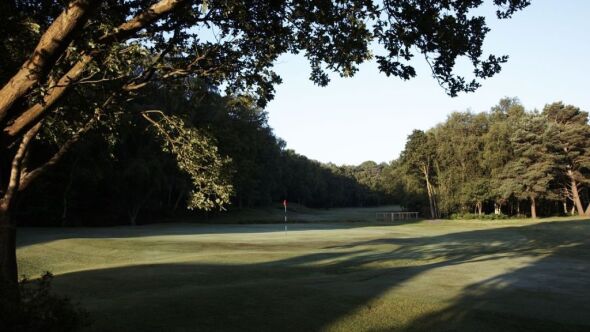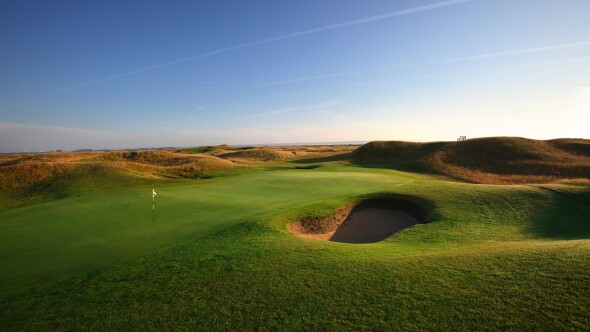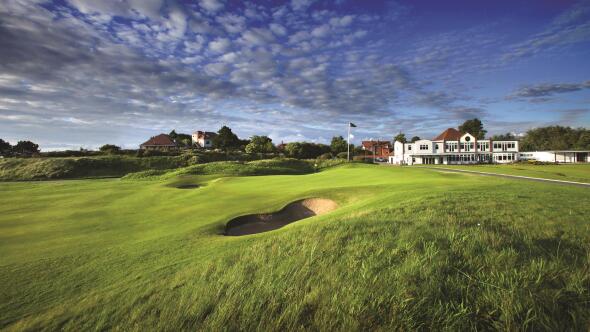Royal Ashdown Forest Golf Club - Old Course

About
Holes
18
Type
Private
Par
72
Length
6591 yards
Slope
138
Rating
72.6
| Tee | Par | Length | Rating | Slope |
|---|---|---|---|---|
| White | 72 | 6591 yards | 72.6 | 138 |
| Yellow | 72 | 6292 yards | 70.7 | 133 |
| Red | 72 | 5604 yards | 67.7 | 118 |
| Red (W) | 73 | 5604 yards |
Scorecard for The Old
Metrics:
| Hole | 1 | 2 | 3 | 4 | 5 | 6 | 7 | 8 | 9 | Out | 10 | 11 | 12 | 13 | 14 | 15 | 16 | 17 | 18 | In | Total |
|---|---|---|---|---|---|---|---|---|---|---|---|---|---|---|---|---|---|---|---|---|---|
| White M: 72.6/138 | 348 | 384 | 328 | 353 | 510 | 125 | 387 | 495 | 143 | 3073 | 498 | 249 | 568 | 391 | 202 | 312 | 407 | 486 | 351 | 3464 | 6537 |
| Yellow M: 70.7/133 | 308 | 376 | 315 | 341 | 501 | 115 | 374 | 470 | 143 | 2943 | 479 | 249 | 528 | 365 | 195 | 298 | 376 | 472 | 333 | 3295 | 6238 |
| Red M: 67.7/116 W: 73.6/128 | 286 | 300 | 305 | 325 | 478 | 107 | 328 | 424 | 121 | 2674 | 385 | 249 | 471 | 299 | 180 | 225 | 312 | 455 | 300 | 2876 | 5550 |
| Handicap | 12 | 5 | 14 | 3 | 7 | 16 | 1 | 9 | 17 | 10 | 6 | 13 | 2 | 11 | 18 | 4 | 8 | 15 | |||
| Par | 4 | 4 | 4 | 4 | 5 | 3 | 4 | 5 | 3 | 36 | 5 | 3 | 5 | 4 | 3 | 4 | 4 | 4 | 4 | 36 | 72 |
| Handicap (W) | 16 | 3 | 12 | 5 | 7 | 18 | 1 | 10 | 15 | 14 | 6 | 11 | 2 | 9 | 17 | 4 | 8 | 13 |
Course Details
Year Built
1888
Golf Season
Year round
Rentals/Services
Carts
Yes
Pull-carts
Yes
Clubs
Yes
Practice/Instruction
Driving Range
Yes
Bunker
Yes
Golf School/Academy
Yes
Golf Simulator
Yes
Teaching Pro
Yes
Pitching/Chipping Area
Yes
Indoor Practice
Yes
Putting Green
Yes
Policies
Metal Spikes Allowed
Yes
Walking Allowed
Yes
Dress code
Shirts must be tucked in at all times. Tailored shorts are acceptable with long socks. Short socks, jeans and sleeveless tee shirts are not permitted.
Food & Beverage
Bar, RestaurantAvailable Facilities
Clubhouse
The Best Way To Book Is With GolfPass+
10 rounds of waived fees
$120 in tee time credits
Tee Time Protection
Redeem GolfPass points
Reviews
5.0
I Recommend This Course
Great Course
Arguably the best golf course I have ever played. The course was in outstanding condition, with well managed greens and fairways and a lot of the ruff cut back in order to forgive for misdirected and lost balls!
The clubhouse and their staff were welcoming and were keen to help wherever possible. They truly delivered exceptional customer service and made the whole day and experience enjoyable.
Would highly recommend this course to any golfer I know and am lookinig forward to when I will next be playing here!
Conditions
Excellent
Value
Excellent
Layout
Excellent
Friendliness
Excellent
Pace
Excellent
Amenities
Excellent
Difficulty
Somewhat Challenging
Business Tools for Golf Course Operators
Nearby Courses
Golf Packages
Royal St George’s Golf Package
FROM $527 (USD)
LONDON| Staying on the scenic east coast of Kent, you will be situated in the perfect position to play 3 past and present Open Championship Courses. After taking on this accomplishing feat, enjoy a more relaxing round at Littlestone. Take in the amazing views of the English Channel at North Foreland and finish the day back at the hotel enjoying exquisite dining. A golf tour to Kent is certainly one to organise!
England’s Royal Golf Package
FROM $587 (USD)
SOUTHPORT | Experience outstanding golf along England’s golf coast with a tour of some of the most famous courses England has to offer. Take on the 3 Royal courses, including Royal Lytham & St Annes and Royal Birkdale which are 2 of only 3 golf clubs to have hosted The Walker Cup, Ryder Cup and The Open. All from a convenient central location, this trip is definitely a must do for any links golf enthusiast!
Course Layout
























